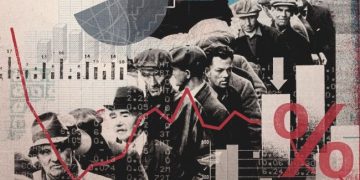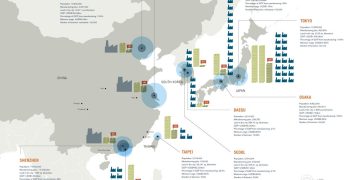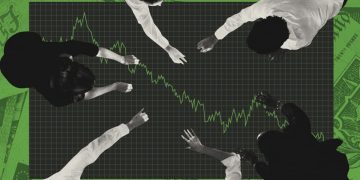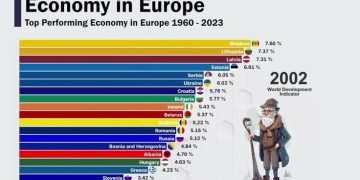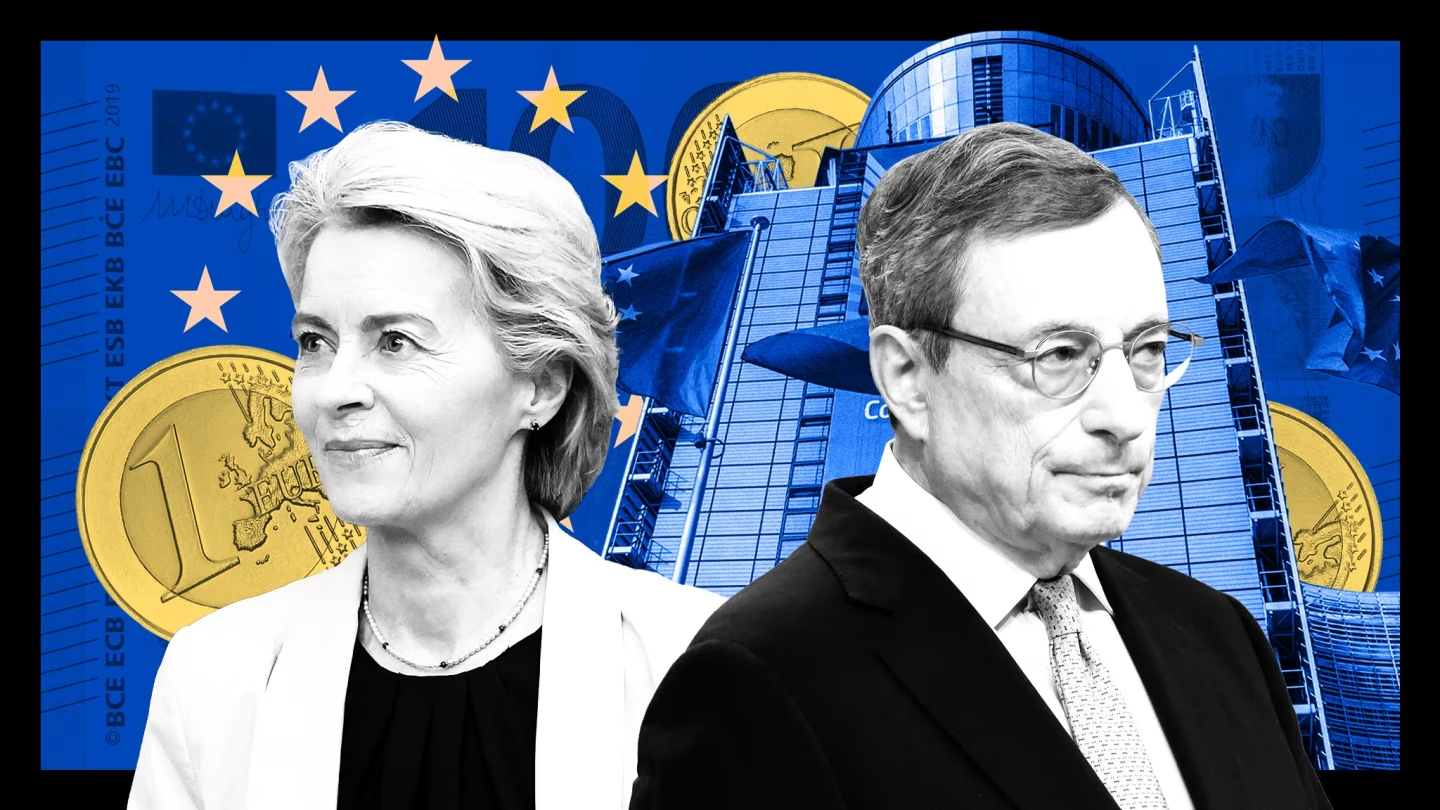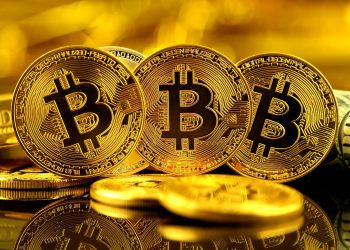Introduction
- Setting the Context of Geopolitical Tension in Eastern Europe:
- Geopolitical tensions in Eastern Europe have been a prominent global concern, particularly following Russia’s actions in Ukraine, which have led to conflicts, sanctions, and military standoffs. The geopolitical landscape in the region remains complex, with historical issues, economic dependencies, and shifting alliances at play.
- In recent years, Eastern Europe has become a focal point for international powers and global markets, with escalating tensions impacting both local and global economies.
- The Relevance of the Topic:
- Why is it critical to assess the potential risks posed by the region to global markets? As Eastern Europe remains central to European security and global supply chains, even minor escalations could have profound economic and financial implications.
- The importance of understanding how such geopolitical risks can reverberate through markets and global economies, especially given the interconnectedness of the global economic system.
Section 1: Understanding the Geopolitical Landscape of Eastern Europe
- Historical Background and Key Issues:
- Overview of the historical tensions in Eastern Europe, particularly between Russia and the West, dating back to the Cold War and beyond. Discuss the significance of the breakup of the Soviet Union and the resulting regional conflicts and territorial disputes.
- The role of NATO and the European Union (EU) in Eastern Europe, particularly with respect to the integration of former Eastern Bloc countries and tensions around Ukraine, Georgia, and Moldova.
- Key Players in the Region:
- The role of Russia: its geopolitical goals, ambitions, and actions (such as military interventions in Georgia, Ukraine, and its stance on NATO expansion).
- NATO and the EU: their strategies for engagement, military alliances, and diplomatic efforts to mitigate conflict in the region.
- Regional actors: Poland, the Baltic States (Estonia, Latvia, and Lithuania), Belarus, and Ukraine, each with its own strategic importance in the region.
- Current Tensions and Flashpoints:
- The ongoing conflict in Ukraine and the annexation of Crimea: the implications for international law, security, and stability.
- The Belarusian political crisis and the role of Russia in supporting the Belarusian government against Western criticism.
- Rising tensions over energy security, particularly with regard to the Nord Stream pipeline and Russia’s use of natural gas as a geopolitical weapon.
Section 2: The Impact of Geopolitical Tensions on Global Markets
- Economic Interdependence and Vulnerabilities:
- Discuss how Eastern Europe’s economic integration with the EU and the global economy has made it a critical region for international trade and finance.
- The role of Eastern Europe in global supply chains, particularly in industries such as energy, agriculture, and manufacturing, and how geopolitical tensions could disrupt these flows.
- Analyze the vulnerability of countries in the region to financial market instability, particularly when foreign direct investment (FDI) is at risk due to increasing instability.
- Energy Markets and Supply Chain Disruptions:
- Eastern Europe is strategically significant in global energy markets. Countries like Ukraine are central to natural gas pipelines, while Russia is a key supplier of oil and gas to Europe. Any disruptions in energy supply could have global consequences.
- Consider how potential disruptions to energy supplies could trigger price volatility in global oil, gas, and electricity markets.
- Analyze how energy security concerns may lead to a realignment of energy policies in Europe and how this could impact investments in alternative energy, renewables, and energy diversification.
- Financial Market Volatility:
- Geopolitical risks often result in increased market volatility, particularly in emerging markets and developing economies that are more exposed to external shocks.
- How investors react to geopolitical risks: the flight to safety, market sell-offs, fluctuations in currency values (especially the Russian ruble and Eastern European currencies), and changes in bond yields.
- Consider the role of financial institutions, hedge funds, and global investors in mitigating or exacerbating these risks. How might central banks and sovereign wealth funds respond to geopolitical instability in Eastern Europe?
- Trade Wars and Sanctions:
- The role of economic sanctions as a tool of geopolitical diplomacy. Russia has faced sanctions from the EU, the U.S., and other allies over its actions in Ukraine and Syria, with significant effects on trade, financial flows, and global commodity markets.
- Assess the impact of escalating sanctions on Russian and European economies, as well as the broader implications for global trade, especially in sectors like defense, energy, and technology.
Section 3: The Potential Risk of Escalation: Military and Political Dimensions
- Military Escalation and Its Global Impact:
- Discuss the risk of direct military conflict between Russia and NATO, including the potential for a wider regional conflict or even a World War III scenario.
- The role of military deterrence and defense policies in preventing full-scale wars: How are NATO countries in Eastern Europe preparing for the worst-case scenario? What would be the implications of an armed conflict between major powers?
- Political Realignments and Shifts in Alliances:
- The possibility of new political realignments in response to increased tensions: would countries in Eastern Europe pivot toward Russia for economic reasons or continue to seek protection under NATO and the EU umbrella?
- Analyze the potential for shifts in alliances and the role of political leaders in shaping the region’s geopolitical future.
- Consider how political stability in Eastern European countries is linked to global investment sentiment and regional political risk.
- Diplomatic Efforts to De-escalate Tensions:
- Examine the ongoing diplomatic initiatives aimed at de-escalating tensions, such as negotiations between Russia and the West, the role of international organizations like the United Nations, and efforts by regional leaders to mediate conflict.
- Explore how effective diplomacy can mitigate risk and how the failure of diplomatic solutions might increase the geopolitical and economic dangers to global markets.

Section 4: Regional Economic Impacts of Geopolitical Tension in Eastern Europe
- Economic Fallout in Eastern Europe:
- Analyze how geopolitical instability in Eastern Europe affects the economies of countries in the region, particularly in terms of growth rates, investment, and fiscal stability.
- The impact on key industries: agriculture, manufacturing, technology, and tourism. How do businesses in the region adapt to or mitigate risks associated with geopolitical uncertainty?
- Focus on Ukraine as a key example: how has the ongoing conflict affected its economy, inflation rates, and business environment? What are the long-term consequences of the war for the country’s economic development?
- The European Union’s Response:
- Explore the EU’s strategy for managing geopolitical risks in its neighborhood. How does the EU protect its interests in Eastern Europe while balancing the need for diplomacy and military deterrence?
- The economic role of the EU’s policies in mitigating instability in Eastern Europe: from trade agreements to military support and infrastructure investments.
- Assess the potential consequences of European integration and energy diversification efforts on the global market.
Section 5: How Investors and Businesses Can Prepare for Geopolitical Risk
- Risk Mitigation Strategies:
- Explore the strategies that investors and businesses can use to minimize their exposure to the risks arising from geopolitical tensions in Eastern Europe.
- Diversification: spreading investments across various regions to reduce the impact of a potential crisis in Eastern Europe.
- Hedging: financial instruments like options, futures, and insurance products used by companies and investors to manage exposure to fluctuating asset prices, currencies, and commodities.
- Adapting Business Models:
- How businesses with operations in Eastern Europe are adapting their business models to the volatile geopolitical landscape. Should companies consider relocating or altering supply chains?
- The role of crisis management and scenario planning in preparing for geopolitical instability.
Section 6: The Role of Global Organizations and Institutions in Managing Risks
- The Role of International Organizations:
- How do international organizations, such as the International Monetary Fund (IMF), the World Bank, and the European Bank for Reconstruction and Development (EBRD), respond to geopolitical risks in Eastern Europe? Consider financial support mechanisms and economic stabilization measures.
- How global organizations work with national governments to create policy frameworks that ensure stability and mitigate economic fallout from political risks.
- The Role of Multinational Corporations:
- How do multinational corporations influence the geopolitical landscape in Eastern Europe? What responsibility do they have in mitigating risks and supporting economic stability in the region?
- Explore how companies like energy giants, automakers, and tech firms are navigating tensions and protecting their investments.
Conclusion
- Summary of Key Points:
- Recap the key points discussed throughout the article: how geopolitical tensions in Eastern Europe could pose significant risks to global markets, from energy disruptions to financial instability.
- The Long-Term Impact on Global Markets:
- Offer a forward-looking perspective on how these geopolitical tensions could shape the future of global markets, particularly in terms of investment strategies, trade policies, and regional cooperation.
- Final Thoughts:
- Conclude with an assessment of how businesses, governments, and investors must remain vigilant and adaptable in the face of rising geopolitical risks. Highlight the importance of diplomacy and cooperation in managing tensions and maintaining stability in Eastern Europe.








